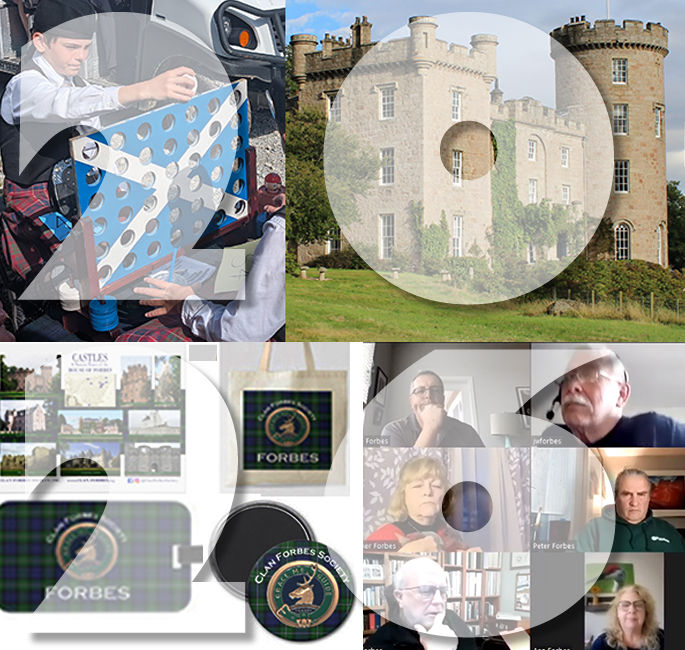Battle of Solway Moss
- Bart Forbes

- Nov 23, 2022
- 4 min read
The 1542 Battle of Solway Moss led to the 1543 Treaty of Greenwich which promised that King Henry VIII’s son, the future Edward VI, would marry Mary, Queen of Scots.

In 1534, English King Henry VIII had pushed the Act of Supremacy through the Parliament. This Act broke removed England from the authority of the Catholic Pope and proclaimed him the Supreme Head of the Church of England. He urged his nephew James V, King of the Scots, to break with the Catholic Church and recognize his authority. King James declined and refused to meet with Henry. In retaliation, Henry launched a series of raids into southern Scotland, called the Borders. At that time, the Borders were contested by both countries which they policed through their West, Middle, and East Marches.
On November 24, 1542, Sir Thomas Wharton, the Deputy Warden of the English West March, led about 3,200 men north to Solway Moss, near the village of Arthuret on the River Esk. Wharton stretched out his troops and raised six regiment flags to make his army appear larger than it was. Robert Maxwell, 5th Lord Maxwell, amassed an army of 15,000 to 18,000 men from many of the Border Scottish Lords to meet him.

William Drummond of Hawthorthden (History of the Reign: James V, 1711) recounts that “The Scottish Lords beholding the English, range themselves in a Battalion, desire to know the King’s Lieutenant General, for now it was time to marshal their companies, and every man to take his charge.” Since James had not officially designated Maxwell as the commander of the forces, he sent his court favorite and minor nobleman Sir Oliver Sinclair de Pitcairnis to deliver his commission in the field. Hawthornden continues: “Presently Oliver Sinclair, upon crossed pikes, is mounted, the King’s banner displayed, and the commission is read, in which he is designed Lieutenant, and all are commanded, in the King’s name, to obey and follow him.” (Ibid.)
Unfortunately, the sight of Sinclair caused great commotion among the Scots, who thought that he was selected to lead them: “It hath been reported by those acquainted with Oliver, that the commission was not read, but that at his very sight, such a tumult, confused clamor, and enter-shouldering of male-contents arose, their ranks were broken, and the military order turned into a confusion, none so repining as the Lord Maxwell and the Borderers, who if he had patience to have heard the commission (as Oliver protested,) was Lieutenant, and not he, whose charge was only to present it.” (Ibid.)

During this “tumult,” the greatly outnumbered English troops attacked. Convinced that a large English army was advancing, the Scots panicked and rapidly retreated. Most of the casualties were from drowning in the River Esk. Most lords and their troops simply surrendered and Wharton found himself with about 1,200 prisoners, including Maxwell, Sinclair, two earls and four Scottish lords.
A few weeks later, Mary was born to King James V and Queen Marie of Guise-Lorraine on December 8, 1542, and the King died soon after on December 14, 1542. Under pressure from the families of the prisoners (most of whom sent “pledges” as hostages), Queen Mary’s regent James Hamilton, Earl of Arran, signed the Treaty of Greenwich on July 1, 1543. This treaty agreed to a marriage proposal between King Henry VIII’s son, the future Edward VI, and Queen Mary of Scotland.

In reaction, William, then the Master of Forbes and later 7th Lord Forbes, joined with other Scottish lords in signing the “Secret Bond” on July 24, 1543, in which they agreed to resist alliance with England by marriage. The agreement was written by Cardinal David Beaton, Archbishop of St Andrews, and was also signed such Scottish Peers as George Gordon, 4th Earl of Huntly; Archibald Campbell, 4th Earl of Argyll; Matthew Stewart, 4th Earl of Lennox; Patrick Hepburn, 3rd Earl of Bothwell; John Gordon, 11th Earl of Sutherland; William Graham, 3rd Earl of Menteith; and others.
The signature of William, Master of Forbes, did not go unnoticed. In a letter to Sir Ralph Sadler on September 2, 1543, King Henry VIII writes that, as hostage for the ultimate delivery of Queen Mary, he will “not be satisfied with Erskynes, or Lord Flemmings or Oliphants sones, but that Sadler must travail to get of the other sort and rather than fail, to assaye whether he can get the Earl of Arrel or some other of the erles and barons as the Erle Marshal or the Lord Forbes sonne, or any of the others that were lately of the Cardynall's faction, when he shall be sure that their fathers shall for the tyme of their absence do him no displeasure.” (Letters and papers of Henry VIII, Volume II, page 5.)
Even though the Earl of Arran ratified the Treaty of Greenwich on August 25, 1543, the Parliament of Scotland rejected the Treaty on December 11, 1543. Furious at the rejection, King Henry VIII of England commenced a series of wars later called the “Rough Wooing.” This term was coined in the 19th century after Sir Walter Scott’s observation that “even those who liked the proposed match with England best, were, to use an expression of the time, disgusted with so rough a mode of wooing.” (Tales of a Grandfather: History of Scotland, Volume II, 1828)




Comments